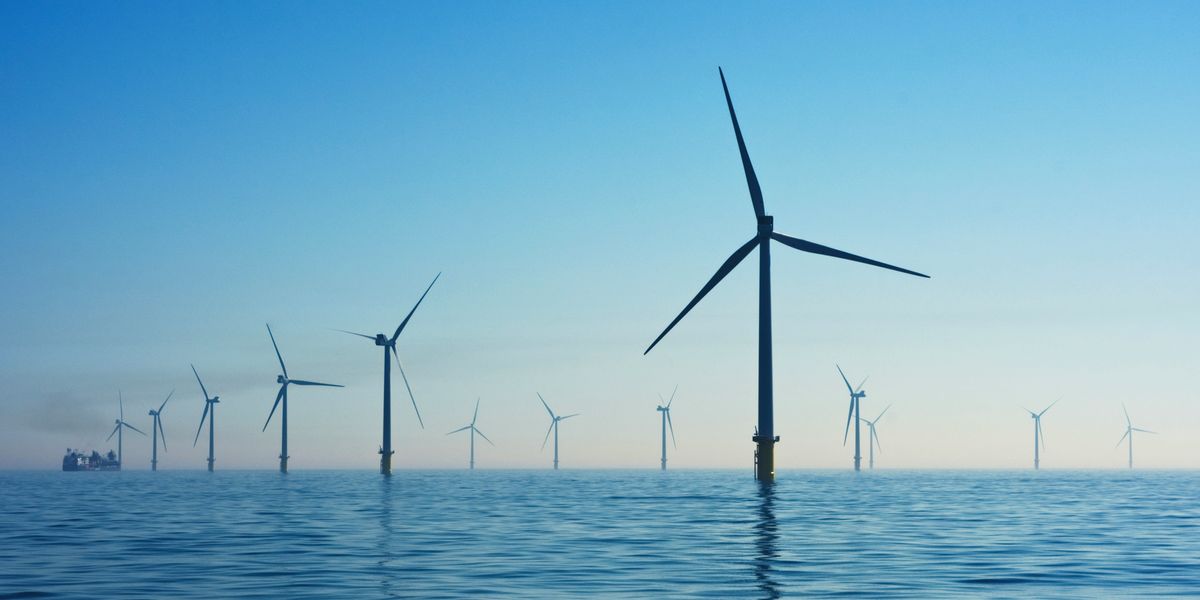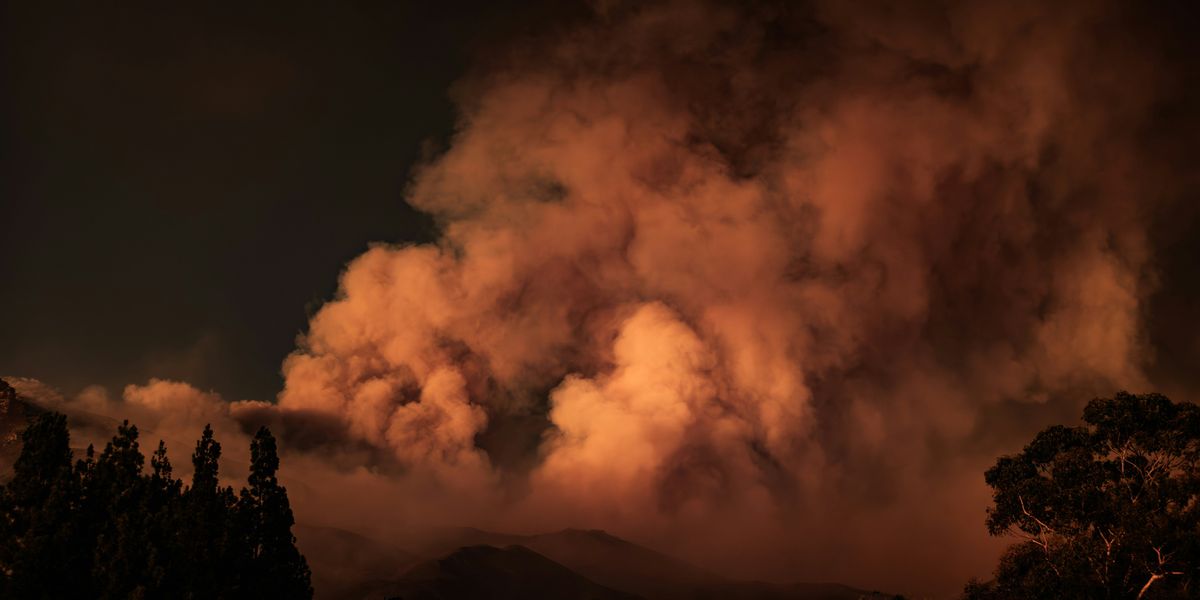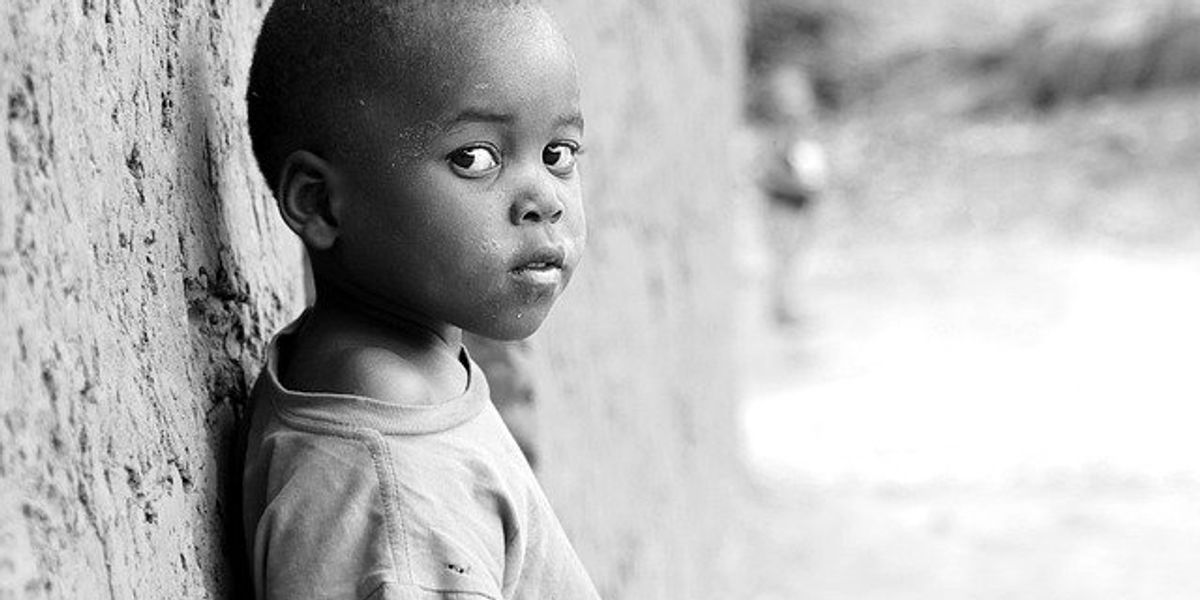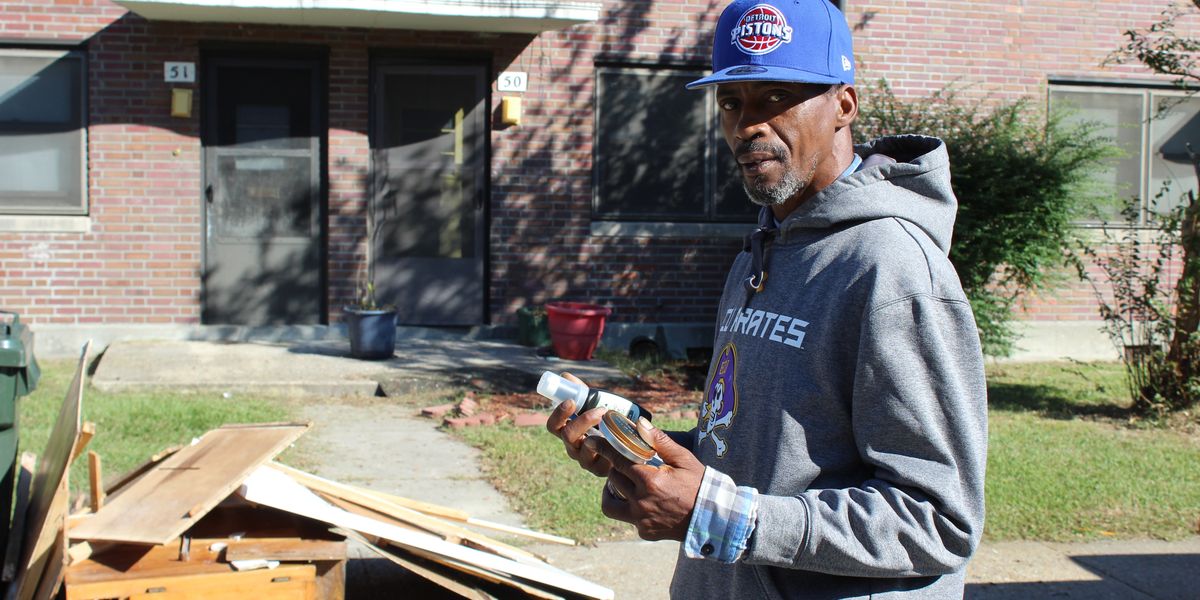
Lingering long after a storm, mold and mental health issues
North Carolinians are organizing against "toxic resiliency," focused on healing from trauma
Editor's note: This story is part of a series examining the social and health injustices resulting from increasingly intense storms and is the result of a collaboration between EHN and Scalawag Magazine, an independent nonprofit magazine that covers the American South.
Read part 1 here.
NEW BERN, NC — Omisade Burney-Scott has white hair in skinny twists that wash forward on her head like a foaming wave, neat purple lipstick and eyeshadow. On a gloomy day in the fall, she wore a black shirt with white lettering on it: "Just a kid from New Bern."
Burney-Scott, a community activist, had driven from her home in Durham, North Carolina, the couple of hours to her hometown of New Bern, to spend the weekend talking to survivors of Hurricane Florence. A lot of these survivors were also relatives, close or distant.
"It takes two seconds to find your cousins in New Bern," she said, laughing.
Her 71-year-old sister, Mary Ann Dove, was among the people who rode out the catastrophic flooding in September. She knew Mary Ann wasn't planning to evacuate (because she had limited resources, and was under the impression that it was not going to be a catastrophic storm). But Burney-Scott got worried as news reports came in about the size of the storm surge from Florence, which made landfall as a Category 1 storm, then moved painfully slowly across the Southeast, dumping feet of rain.
"I called her and I said, 'I need you to look outside and tell me what you see,'" she said. Mary Ann had fallen asleep on the couch watching the storm, and when she got up and went to the window, she cried out "Oh, my god." It looked "like a swimming pool" in her front yard.
Burney-Scott called Craven County—where New Bern is located—emergency services, and hours later her sister, who doesn't know how to swim, was rescued by boat—along with her granddaughter and 6-year-old great-grandson.
"When I came a week after the storm," Burney-Scott said, "that's the first time I saw her break down and cry." Mary Ann was and is terrified of drowning.
For more than six weeks, Mary Ann was temporarily housed by a church member in New Bern she declined an interview, but knew that her sister was speaking to me).
Meanwhile, everyone in New Bern watched as the national media descended on their town, and then left again as the floodwaters receded.
The problems with displacement, slow FEMA payments, and lack of rental homes are well-documented, but residents like Burney-Scott's sister are left with longer-term problems. Staying healthy in the months after a flood presents a conundrum: People who stay at home may be living among rotting walls, exposed insulation, and black mold, as Mary Ann would if she stayed at home.
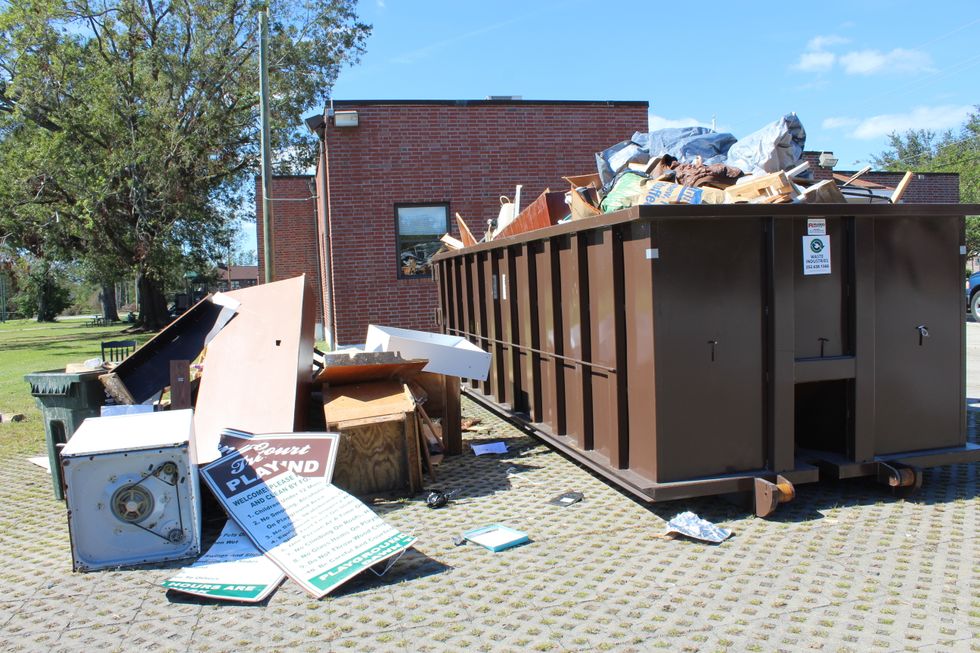
The offices of the New Bern Housing Authority were among the buildings destroyed by Hurricane Florence. (Credit: Lewis Raven Wallace)
But people who move find their lives destabilized, and pay the cost of being further from work and family. And mental health experts say that anyone might experience a hurricane as a traumatic event; healing in the midst of ongoing stress is a tall order. Studies have found heightened prevalence of PTSD, anxiety, and depression in survivors of flooding and hurricanes, and mental health symptoms are even more likely for people displaced to shelters.
"Trauma is a very personal experience," said Dr. Emanuela Taioli, MD, PhD, Director of the Institute for Translational Epidemiology at Mt. Sinai. She's worked on studies of Hurricane Sandy and Harvey survivors, and she says the trauma associated with witnessing a flood, fearing for your or your family's life, or being displaced from your home can have long-term effects.
Being in a cramped shared space without support for a week or two compounds that, Taioli said. "A week is a lot of time to be in a situation where you share a bathroom with people you don't know."
Burney-Scott, whose nickname in New Bern is Billie, is seeing these effects with her own eyes: She takes her glasses off when she starts to cry. Her sister is the eldest sibling and matriarch of the family, and sleeping on someone's couch was an alarming development. She can't even talk about the stress.
"I'm scared this is the thing that's going to take her out," Burney-Scott said. She's worried about her sister's stress, anxiety, and tendency to be a caretaker even when she's the one who needs taking care of.
She's also worried about the cough her sister has had since the storm—like a lot of people in New Bern, she's been spending time in buildings that were water-logged, and are now moldy. "She's so tired. She's used to bouncing back from really hard situations. She has built up what I would call a high level of toxic resiliency."
The trouble with "toxic resiliency"
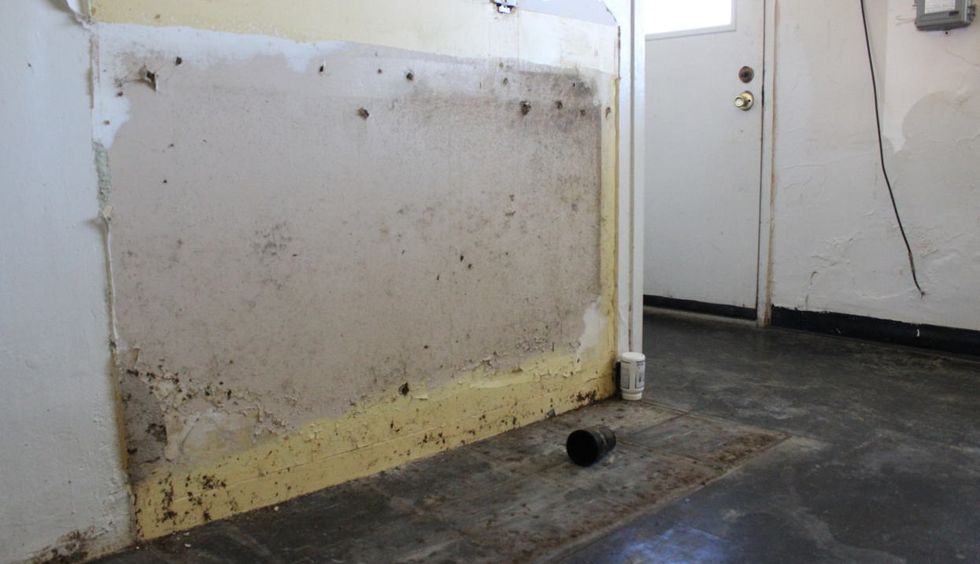
Inside of Tyechia Buck's apartment at Trent Court Housing Development, everything was gutted after the flooding of Hurricane Florence. She now lives there without electricity. (Credit: Lewis Raven Wallace)
Burney-Scott was in New Bern for an event co-organized with New Bern native Dr. Ed Bell and Dawn Baldwin Gibson, local community organizers who have been concerned about the lasting effects of Hurricane Florence on New Bern's Black community.
At Peletah Ministries, a small storefront church where Gibson is the co-founder and executive pastor, burgundy church chairs filled up with parents and children for an afternoon session on trauma, led by a psychologist.
After the session, there was a pop-up clinic where attendees could get resources for mental health and legal services, an idea hatched by Burney-Scott after organizers in Florida and Louisiana told her these resources should take top priority.
Dr. Brendan Hargett took the church podium in his slate gray suit, a salt and pepper beard and glasses. He said the first obstacle to treating trauma is recognizing it's there.
"Sometimes our children are exposed to things that we as parents want to brush under the rug," he said, to nods and murmurs from the audience.
"September was a rough month," he said. Yes indeed, yes it was, the crowd responded. He explained that trauma is a normal response to an abnormal event: When you experience a stressful event, the body releases stress hormones, which cause you to run, freeze, or fight. "All of these hormones are released into your body which signals you to do something in order to protect yourself."
The question is, what happens when that stressful event—or signs of it—come back every day?
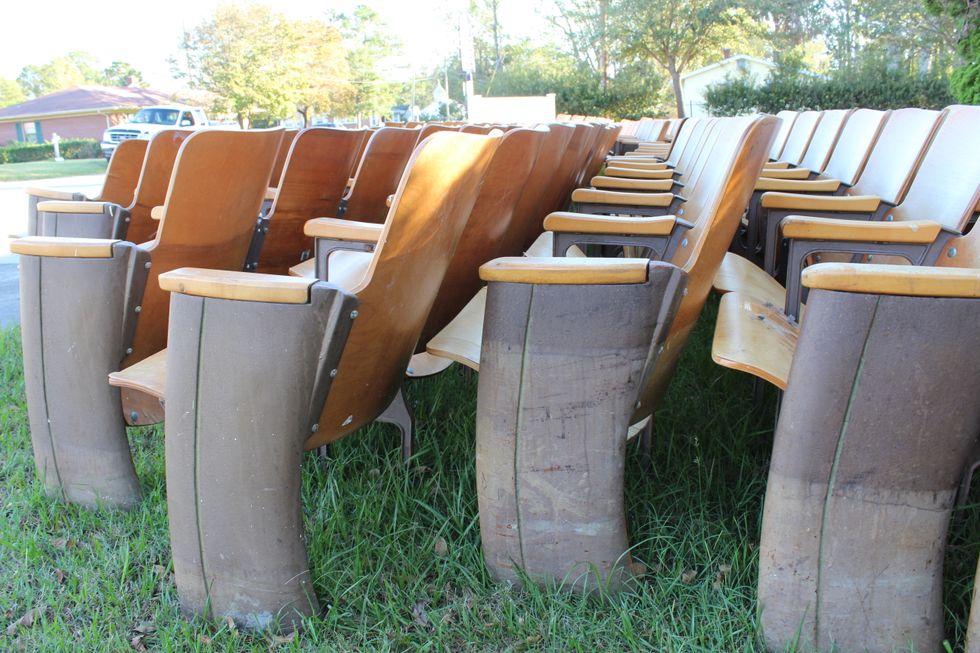
Auditorium chairs lined up outside an elementary school in New Bern after Hurricane Florence. (Credit: Lewis Raven Wallace)
During hurricanes and floods, research shows that children and adults alike may be traumatized, with effects including PTSD, insomnia, and anxiety.
One study of low-income parents who survived Hurricane Katrina showed half of them experienced PTSD, and the prevalence of severe mental health issues in the group doubled in the year following the storm.
In an extended study of Hurricane Sandy, Dr. Taioli and other researchers found that few mental health resources were available to hurricane survivors, even at government shelters.
"It was more like a camp than a shelter. And there was no social support, none of the shelters had social workers, psychologists, no one who could help these people with the situation they were in," she said.
Her research cohort recommended to the U.S. Centers for Disease Control and Prevention that the federal government start providing mental health and social work resources in shelters, but that still doesn't address the problem of multiple, ongoing trauma, an issue that has yet to be studied for hurricane survivors.
"People with two [traumatic] events do much worse than people with only one event. It's understandable, but nobody is thinking about what to do about it," Dr. Taioli said.
Dr. Hargett explained that there are many types of responses to trauma: Feeling scared, helpless, anxious, depressed, even guilty—many survivors are plagued with guilt over people who fared worse in a disaster. And there's also anger.
"Anger—how many of y'all get angry?" he said, the crowd laughing softly. "There are people that are still mad with God."
Trauma and PTSD can be compounded by a long term stigma in many Black communities about accessing mental health services, and by an acute lack of Black therapists and psychiatrists. "Not going to professionals/seeking professional help is linked to historical experiences in the African-American community," Dr. Hargett said.
Pastor Anthony Gibson, Dawn's husband and the senior pastor at Peletah, piped up to say his parishioners often think they don't need therapeutic help because they have Jesus. "I say to them, 'well, I can have Jesus and a therapist.'"
A woman in a hot pink shirt named Latonia Barnes attended the event with her family, concerned about her own children, ages 2 and 5. She said they, too, had to be rescued by boat after their house took three feet of water.
They've moved to stay with family, but she doesn't want to go back to a flood area—her 5-year-old daughter is now afraid of water.
Barnes is struggling with how to stay strong for her daughter without setting the example that her children need to always suck it up and hide their emotions.
"I'm still having dreams of being in the dirty water, and just thinking about it. It's gotten to the point now where I can't sleep without thinking about it," she said.
Toward the end of the event, Burney-Scott spoke up from the back.
"As people of color, as Black folk we talk a lot about our resiliency, about our ability to bounce back from disasters, whether that's a natural disaster like Florence, or a human disaster like white supremacy and racism. But what if the traumatic event didn't have to happen?" she said. She argued, and Dr. Hargett nodded agreement, that this is a sort of "toxic resiliency"—not actually bouncing back, but adapting to the toxicity of stress and repeated trauma in the body in ways that are actually damaging.
"It's become this weird compliment-not-compliment about how strong we are as a people. Folks become numb to our pain, because we always experience pain, and we bounce back," Burney-Scott said. "Someone can be standing in front of me and I'm bleeding out and they say it's okay, you'll be resilient, you'll bounce back. But people are dead because trauma killed them."
Treating trauma, but not mold
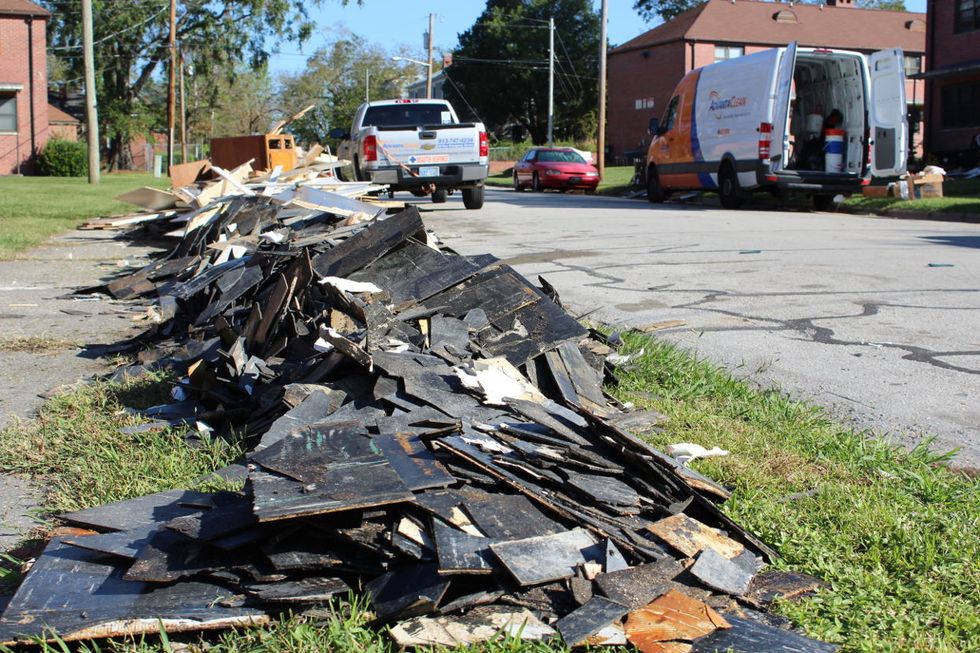
Rubble outside of apartments at Trent Court Housing Development, a public housing project near the waterfront in eastern North Carolina. Half the units at Trent Court were flooded during Hurricane Florence. (Credit: Lewis Raven Wallace)
Dawn Baldwin Gibson started a school here, at Peletah Ministries, a couple of years ago, and says many of her students and their parents were already survivors of Hurricane Irene (another disaster that led to the establishment of Peletah, when Gibson and her husband started serving meals to people in need). Peletah Academic Center for Excellence is a private K-8 school that teaches with a trauma-informed curriculum.
As such, she feels the school was ready for an event like Florence—at least, as ready as you can be. Gibson is passionate and clear, her big smile belying a pained look in her eyes.
"We have a lot of parents who are coming to us now saying, I need my child there, because they were rescued out of the water and they're having nightmares and when it starts to rain you can see them tensing up," Gibson said. Her students can be triggered into a trauma reaction by rain itself, and some are living long-term with family or friends. "Every single child has been impacted."
Their first week back to school after Florence, the students did art therapy. In October they had a visit from people who run an aquarium, talking about the importance of environmental stewardship.
Treatment of trauma at the school is ongoing, but Gibson is equally worried about the mold; she gets calls from elderly people as well as parents of young children who are still living in homes that were flooded, in need of renovation but with nowhere to go.
"That to me is going to be the public health issue number one," she said. Many people have allergic reactions to mold, and the CDC warns that people with asthma or other respiratory conditions and people with weakened immune systems should stay clear of homes with mold in them, because they can risk infection.
Children were found to be particularly vulnerable to upper and lower respiratory illness following Hurricane Katrina, and the long-term effects of mold exposure from storms remain unclear.
The supervisor of environment health for the Craven County Health Department, Keith Jernigan, said the county saw about a 10-fold increase in complaints about mold in the weeks following Hurricane Florence; they had dozens of complaints in a short period of time when normally they would have about two a month. While the department isn't able to help with remediation, it sends out information packets warning about the allergenic and toxic risks of mold exposure, and giving suggestions for safe clean-up. After the event at Peletah, Gibson walked out front.
"I tell the kids to take a walk, take breaks," she said. "I guess that's what I really need right now."
As she set off to stroll around the block, it started to gently rain again. It almost felt as if New Bern would never dry out. And soon enough, it will be hurricane season again.
Lewis Raven Wallace is a journalist and editor based in Durham, North Carolina. His work focuses on people who are economically, geographically, and politically marginalized, and he's a regular contributor to Scalawag Magazine. His forthcoming book from University of Chicago Press is about the history of "objectivity" in journalism.




